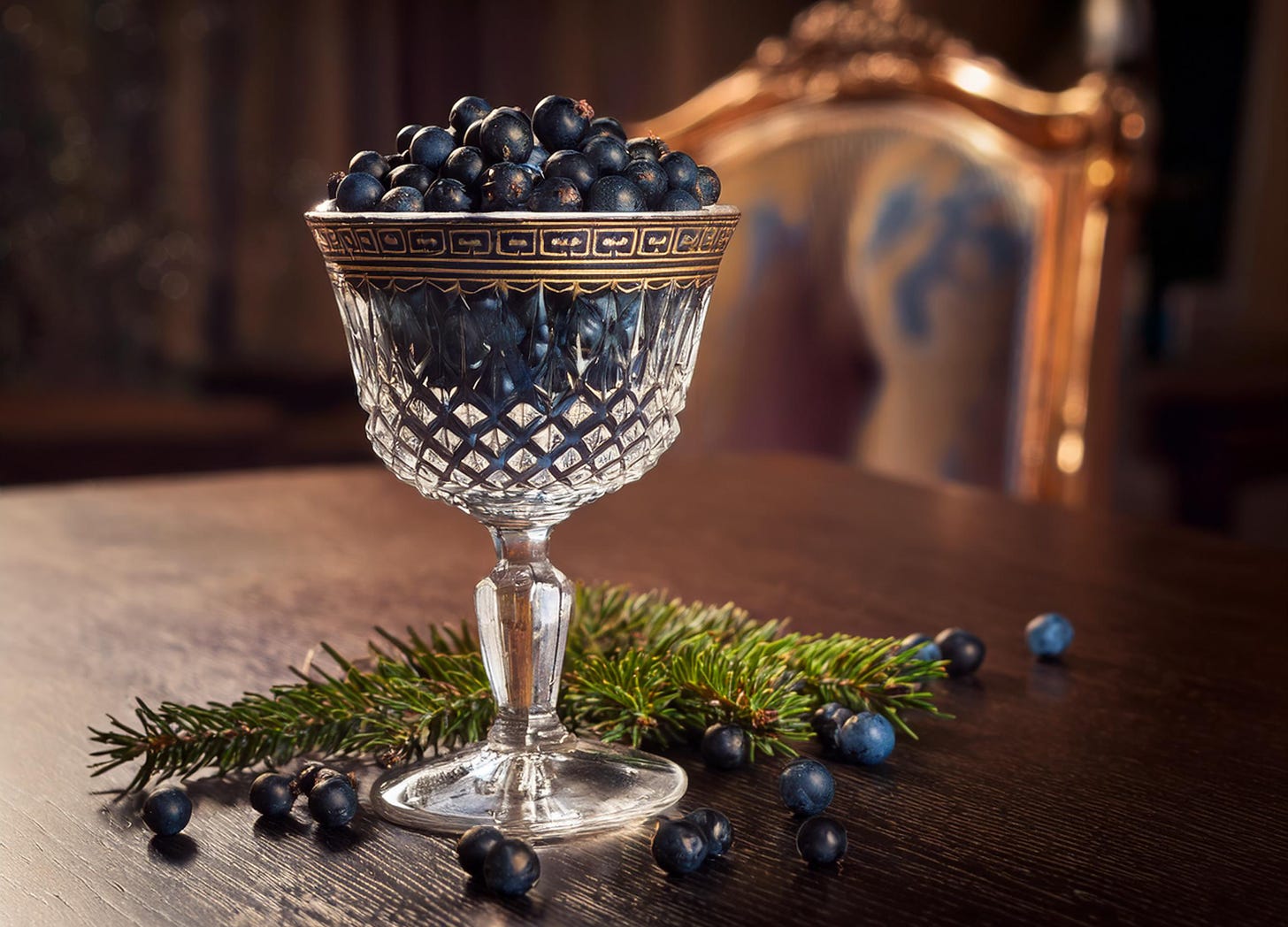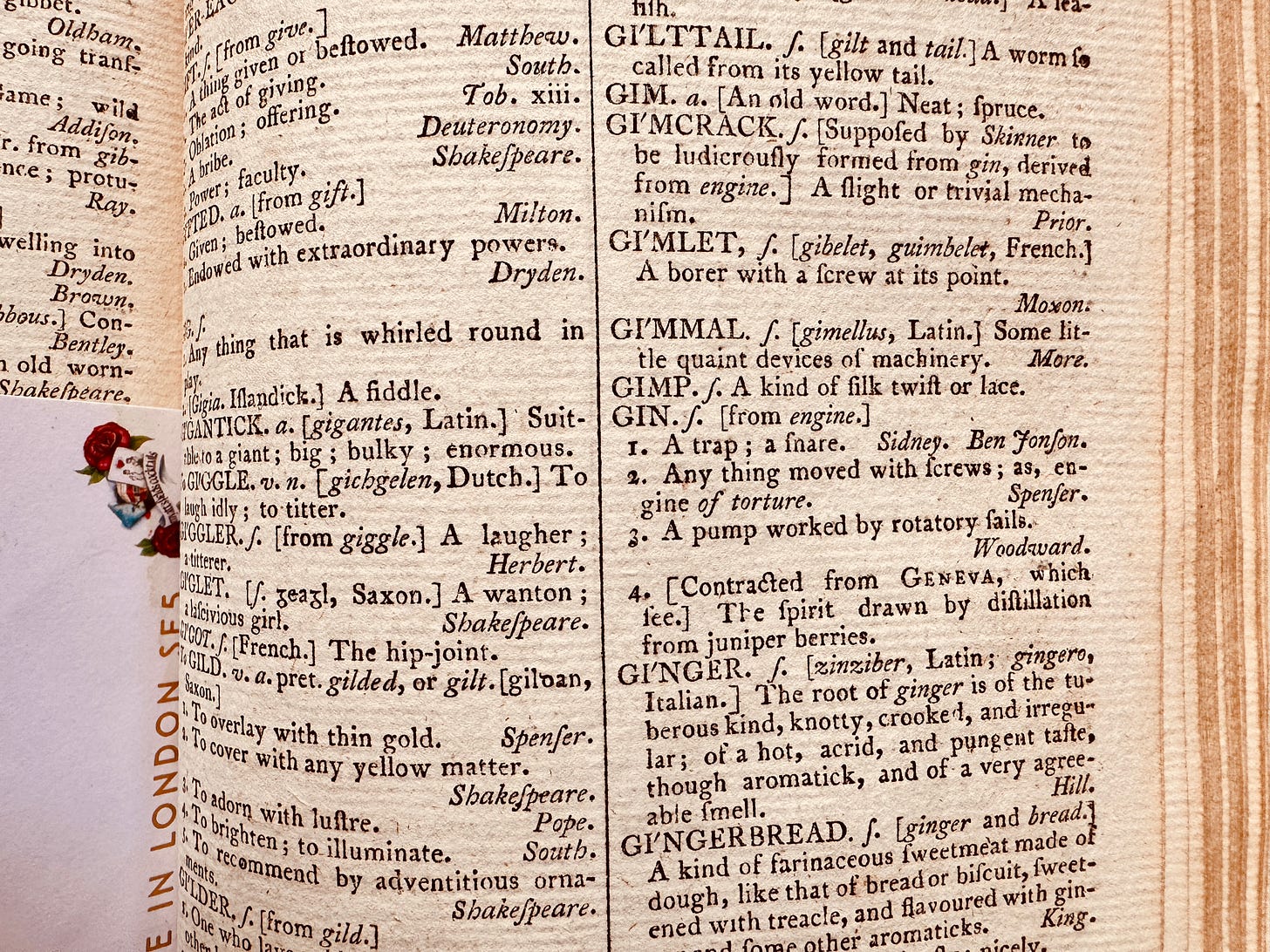Why a new Substack that discusses in undue detail the historical journey of gin from a trodden on juniper berry in the ice age to a warm slug of mother’s ruin in a London slum to a beautifully presented Gibson served in just the right glass at exactly the right temperature with a pair of perfectly skewered pickled onions? The answer, as they say, is in the question. Of course we all need that, immediately, and it is my great pleasure to write it all down for you.
Gin, we know, is not the drink of the velvet trousered fop. It has never been the toast of the respectable merchant or scholar. It is simply not like whisky, which has always been hard to make and thus expensive, or rum, which needs sunshine, and is for sailors coming back from the Caribbean, not people hiding from the rain in Northern Europe. It is definitely not for the refreshment of peasants in the meadows and orchards of Merrie Olde England celebrating the ale they have just made - it is essentially defined by being the opposite of that. Gin is uniquely urban, and it possesses - or at least has been said to possess - all of the vices and virtues of urban life.
So what is it then, gin? It is in the first ever dictionary, Samuel Johnson’s Dictionary of the English Language in 1755 - where it says ‘gin (contracted from GENEVA) The spirit drawn by distillation from juniper berries’ (see here between GIMP and GINGER).
That’s wrong, obvs. You can’t distil gin from juniper berries. At that time, half way through the 18th century, the word gin just referred to any grain based spirit, ie, a distilled spirit but not a brandy (which is distilled fruit).
Today, gin refers to a neutral spirit that has been principally flavoured with juniper, bottled at a minimum ABV of 37.5%. That is the UK rules anyway, cue a hot take on ‘non-alcoholic gin’, which we will come onto much later.
The best base spirit is produced from wheat or barley, but you can use anything that contains enough carbohydrate to produce alcohol as it ferments. It is rectified, which means it is distilled multiple times to make the base spirit and to flavour it, and it is not aged - zero years in a barrel. Actually the quicker it gets from the still into the bottle, the better.
But really, that’s not the point. That’s just the tech. The history of gin is really the history of us - especially the us that hail from London. The history of gin is the journey from the Ice Age to Persia and across Europe to London. That journey covers breakthrough successes in alchemy and science, the lives of the rich and the poor, hundreds of years of fashion and disease and pleasure and pain, and it shows us how we as a society have got to grips with outcasts, with drunks, and with criminals, how we comfort ourselves in times of pain, and how we aspire to ambitious elegance when times are good.
Gin has been the drink of the rich, and then very much the drink of the poor. It’s been big business, and then broken and forgotten, and now today we are seeing a golden age of small batch gin distilling everywhere like we have never seen before.
That’s the short version of this Substack. The way this is going to work is I’m going to go way back from there, back to how gin came to be, and then we will look at how it lands in London and what happens, and then we will sweep forward, taking on the controversy of the origin of the word cocktail, examining what resuscitated gin in the 1980s, until we come up to date, eyeing up a Bramble at your favourite place in Soho, wondering if it is your best idea.
I will attempt to keep all of this in the context of London and England, but we must take a a look at Baghdad, inspect Salerno, take a trip across Spain to the Netherlands, and spend an inordinate time in the US as we go along, in order to tell the story properly.
When we get to the end, we will choose our next spirit and dive into that. Sound good? Come with me, and we shall see.




Is gin short for Virginia? And what is gin rummy? Onboard! Wonderful writing. xx